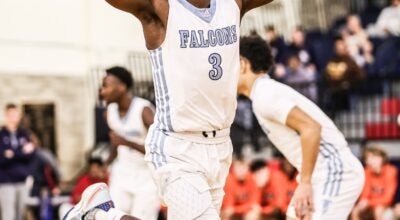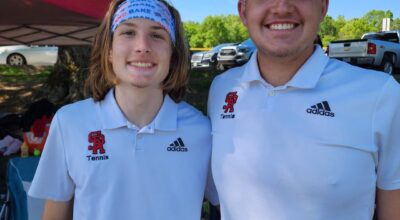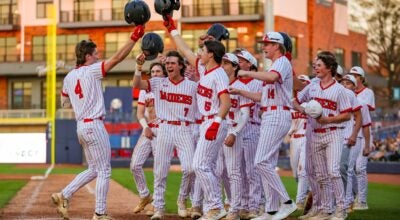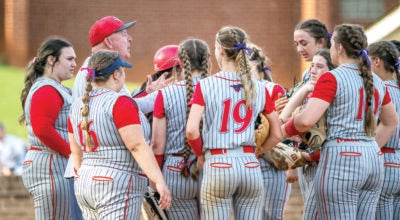London column: World Series MVP Corey Seager honed his skills in Kannapolis
Published 12:00 am Thursday, October 29, 2020
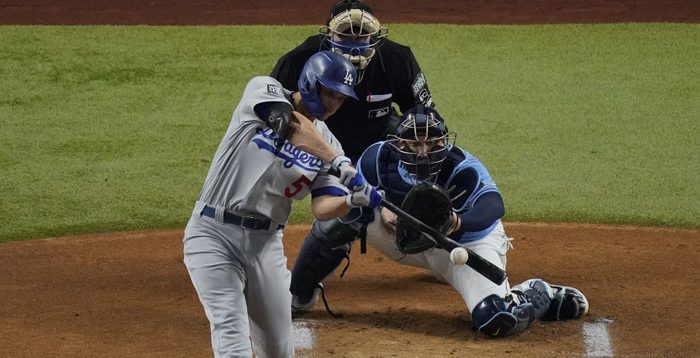
- Los Angeles Dodgers' Corey Seager hits a RBI-single against the Tampa Bay Rays during the first inning in Game 5 of the baseball World Series Sunday, Oct. 25, 2020, in Arlington, Texas. (AP Photo/Sue Ogrocki)
KANNAPOLIS — Late Tuesday night I was able to cross an item off the bucket list.
Namely, “attend the high school graduation of a World Series MVP.”
MVP Corey Seager graduated from Northwest Cabarrus High on June 12, 2012, at Cabarrus Arena. Technically, I was there to listen to a stream of words of wisdom from my nephew, Noah Driver, a smart kid headed to Davidson College and one of the speakers. Corey didn’t speak, but he’s always preferred to let his bat to the talking.
Post-graduation, I chatted with Jeff Seager, Corey’s amiable father and someone I knew reasonably well from covering dozens of Kannapolis American Legion and Northwest Cabarrus games, mostly ones in which the oldest of his three sons, Kyle, had starred. Jeff is as low-drama as it’s possible for someone with superstar sons can be. Mostly we talked about the impressive progress of Kyle, a standout at UNC and a third-round pick after his junior college season. He’d already made it to the majors as the starting third baseman for the Seattle Mariners.
Corey had been drafted by the Los Angeles Dodgers eight days before that graduation ceremony.
Rowan County American Legion was on the road at Kannapolis the first night of the 2012 MLB draft, June 4, so I happened to be in the press box at Northwest Cabarrus when he was drafted, the 18th pick of the first round. It’s hard now to believe 17 guys were picked ahead of him, but that list includes talented people such as Carlos Correa, Byron Buxton, Tampa Bay Rays catcher Mike Zunino, Max Fried, Lucas Giolito, David Dahl and Addison Russell. Scouts generally know what they’re doing.
Corey wasn’t in the lineup for Kannapolis that night, as he was understandably at home watching the draft unfold on TV. As soon as he saw his smiling face and name splashed across the screen — making it official that he would soon be a baseball millionaire — he sprinted to his car and headed to the ball field.
Northwest and Kannapolis Legion head coach Joe Hubbard was in the press box, as it was an NCHSAA “dead period” due to exams. He couldn’t be on the field coaching his high school players. Hubbard, like everyone else, was following the draft on his phone. He punched the air when Corey was selected. Not many guys get to coach a first-round pick.
There was a buzz in the crowd as a tight game moved along. It was 4-all after eight innings, and Corey had arrived at the park.
He was in uniform — and in tears. He was a first-round pick, but he was also an 18-year-old high school kid overcome with emotion, trying to handle the realization of a dream he’d carried since he’d first picked up a baseball. He climbed the press box steps to embrace Hubbard, Hubbard hugged him back, and I felt like sobbing right along with them.
Then Corey scrambled down to the field to join his teammates in the dugout.
“The kid wants to play,” Hubbard said. “That speaks volumes about him.”
Corey did want to play. Pitching coach Nick Daniel was in charge on the field, and Hubbard signaled to him to put Corey in the game as a pinch-hitter in the bottom of the ninth. Corey didn’t get to swing. Jordan Goodman concluded the game suddenly with a walk-off homer against Brian Bauk.
Rowan heads were down after a tough 5-4 loss, but I remember the late Bob Lowman, Rowan manager, energetically charging across the field to congratulate Corey on being drafted.
“We’re all proud of you and we’re all behind you whatever you decide to do,” Lowman said.
Standing in right field, I asked Corey about his intentions following that game. His red eyes had cleared by then, and he spoke like an adult. He said he was “anxious, but not nervous” watching the draft. He had signed with South Carolina, so college was sort of an option, but he also stood to net about $2 million as a signing bonus as the 18th pick. He said he wasn’t worried about the money, that (world-famous agent) Mr. Scott Boras would be handling the negotiating with the Dodgers. He also displayed a sense of humor. He confessed Goodman’s homer had saved him from “one of the ugliest at-bats of all-time.” He said he’d been so emotional that Bauk could’ve fired three straight off the backstop and he would’ve swung at all of them.
Corey loved baseball and loved his team so he did keep playing for several weeks that summer, while Boras successfully negotiated a bonus deal of $2.35 million.
A few weeks after the draft, Corey launched a ball into orbit at South Rowan High that became the stuff of legends and myths.
It was a mammoth third-inning shot with the game tied, and as the ball soared over the wall and over the trees and threatened the football field, former South coach Ernie Faw, filling in as the public address announcer, calmly remarked, “Seager has,uh … untied it.”
Everyone has an account of what happened that night, and the 200 or so fans actually in attendance have swelled to a mob of thousands over the years. The eyewitnesses with the best view of what amounted to the cold-blooded murder of a helpless baseball were second baseman Connor Bridges, who said he had never seen a baseball hit so hard, and right fielder Tyler Fuller, who said he had never seen a baseball hit so far.
Seager himself modestly admitted, as he signed autographs after the game, that he “finally got my hands through a ball.”
He wasn’t around long after that. By June 28, he was headed to L.A. By June 30, he was officially a Dodger. He collected his first professional hit on the same night that depleted Kannapolis was ousted from the Legion playoffs by Statesville. It took a while for his first pro homer, but then he hit two in the same game two nights later.
The first time I ever saw Corey was when he was hanging around the dugout after Kyle’s Legion games. Kannapolis parents whispered that he was going to be even better than Kyle, and they turned out to be prophets.
Kyle was a textbook ballplayer, but Corey was the upgraded model. They had the same sweet lefty swing and relentless work ethic. The same combination of looseness and competitiveness. The same blend of swagger and humility. But Corey, who grew to 6-foot-4, was more physically gifted. He was bigger, stronger, faster and quicker. Kyle had sure hands and a good arm, but he didn’t have the agility to play shortstop at the big-league level. Corey could.
Corey was playing in foreign countries at age 16 as a member of Team USA.
He was the Gatorade Player of the Year for the state of North Carolina as a high school senior. He batted .519 with 10 homers and 37 RBIs, and that was with a lot of teams pitching around him.
No one knew better than Kyle as far as what was coming for Corey.
The three Seager brothers (Justin, the middle one, was a terrific college player for the Charlotte 49ers and also played in the minor leagues) always pushed each other and competed fiercely in the offseason.
“I remember getting called up to the big leagues for the first time in 2011,” Kyle said. “I learned great new drills, and I couldn’t wait to get home to share them with my brothers in the off-season. But then we’re doing those drills, and it didn’t take long to see that Corey — he was 17 then — had a better arm than me and was a lot quicker. Then I thought once we got in the batting cage, then I could show him something, but he was hitting the ball harder than me. I was in the big leagues and my brother in high school was better than me. So I saw all this coming. I’ve been telling everyone for years he’d be the best in the family.”
In 2015, the three Seager brothers were riding home together from the Greensboro airport when I happened to put in a call to Kyle. It turned out to be a conference call with all three brothers on speakerphone. Corey was regarded then as the best prospect in L.A.’s farm system. I asked him about the Dodgers’ trade between the 2014 and 2015 seasons to acquire former National League MVP Jimmie Rollins to play shortstop. He didn’t sound worried about it. He said he could learn a lot from a guy like Rollins, but he didn’t expect to change positions. Shortstop was where he’d played all his life.
That confidence was warranted. Before the 2015 season was over, Corey had supplanted Rollins as L.A.’s shortstop. In 2016, he was voted National League Rookie of the Year.
Corey was third in the MVP voting in 2016 and he was an all-star in 2016 and 2017.
But 2018 was a nightmare due to injuries. A hip injury was traced to a birth defect. There was Tommy John surgery to repair an ailing elbow.
He came back in 2019 to smack a league-leading 44 doubles.
Then in 2020, after an off-season of weightlifting, he turned in a tremendous COVID-shortened regular season with a .307 batting average, 15 homers and 41 RBIs in just 52 games.
Then in the postseason, he just blew up.
He hadn’t been stellar in his previous postseasons, but this time he was clutch and consistent with eight homers and 20 RBIs in 67 at-bats.
He set a number of records and was named MVP of the National League Championship Series as well as the World Series when he led the Dodgers to their first title since 1988. No one had won both awards since Madison Bumgarner, another North Carolinian, accomplished the feat for the San Francisco Giants in 2014.
Kyle, now 32, has socked 207 MLB homers. He’s had a phenomenal career, easily the best for a Cabarrus big leaguer since that of Billy Dale Goodman, who won the 1950 American League batting title as a member of the Boston Red Sox.
But Corey is almost certain to eclipse Kyle at some point — just as long as he stays healthy.
The brothers played against each other in the big leagues for the first time back in August. Not surprisingly, they both sent one out of the park, the first time brothers had homered for opposing teams in the same game since 2001.
In 2016, they were the first set of MLB brothers to hit 25 homers in the same season.
Kyle has launched three homers in a single game. Corey already has done that twice — against the New York Mets and the Atlanta Braves.
Corey played for $4 million in 2019 and for $7.6 million this year. Both times, the Dodgers signed him in January and managed to avoid going to salary arbitration.
Estimates are that could get $15 million from the Dodgers in 2021. He’s scheduled to hit the free-agent market in 2022 unless the Dodgers sign him to a long-term deal. Either way, he’s going to earn an insane amount of dollars in the years ahead.
As far as the immediate future, the 2021 Chevrolet Tahoe that Corey accepted for being World Series MVP cheerfully will be passed along to his fiancee, Madisyn Van Ham.
A winter wedding is planned. Corey, 26, has been quoted as saying that he’ll be getting two rings in the offseason.
Looking back on it all, it’s not a shock that Corey has blossomed into a World Series MVP. On the surface it sounds like a long shot, a kid from Kannapolis making it big in L.A., but this guy has had it all for a very long time.
So I sit here on the day after the Dodgers finally won their first World Series since the days of Orel Hershiser and Kirk Gibson and I think about that homer Corey launched at South Rowan and that high school graduation day eight years ago.
I think about his family and how proud they must be. Both of his parents grew up near Poughkeepsie, N.Y. It was a wonderful piece of luck for Kannapolis when IBM transferred Jeff Seager, a statistician, to North Carolina in 1985.
Jeff (and wife Jody) did such a marvelous job with their sons. They were able to inspire them and push them without driving them into the ground. They were athletes, and their children are an extension of them.
They allowed all their boys to play high school basketball, and they were very good players. I think that was important. It not only broke up the baseball grind every year, it let them see that there were athletes out there who could move faster and leap higher, that they had to keep working every day to make their dreams happen.
Now Corey is a World Series MVP, the ultimate dream for every baseball-playing youngster.
And my bucket list is a little bit shorter.


